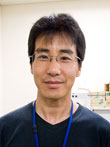- HOME > Laboratory > Groups > Quantum Science and Technology Lab. > Quantum Optical State Control Research Group
The quantum optical state control research group studies a wide variety of scientific topics related to the quantum physics of light and its interaction with materials. Our ultimate goal is to establish novel technologies for information processing and communications by exploiting the quantum nature of light. Our main activities include performing quantum communications experiments, exploring quantum state control techniques for photons with an integrated lightwave circuit, and conducting quantum simulations of many-body problems using ultra-cold atomic gases. Since 2014, we have also been engaged in an investigation of non-Neumann-type computing frameworks based on an optically-implemented Ising-spin network, under supervision of a Japanese governmental project so called ImPACT. The following outlines our most recent research activities.
Observing quantum phase transitions of bosonic atoms in an optical lattice: An advanced experimental technique in atomic physics allows us to create an artificial crystal, a so-called optical lattice, inside ultra-cold atomic gases using laser light. We theoretically study quantum many-body physics by considering the cold atoms in an optical lattice as a quantum simulator. Our group collaborated with an experimental group at Kyoto Univ., and together we observed quantum phase transitions of bosonic atoms in an optical lattice. We expect that our results will lead to progress in the realization of quantum simulations with cold atoms.
Lossless wavelength conversion of single photons using fiber-optic cross-phase modulation: Wavelength conversion of single photons is crucial for quantum communications technologies, where photons mediate interactions between various quantum systems. We have developed a new scheme for the conversion using fiber-optic cross phase modulation. The scheme enables us to convert photons of one color into another color in a lossless manner and thus provides an avenue to scalable quantum networking.
Large-scale Ising spin network with optical parametric oscillators: Artificial spin systems with networked optical parametric oscillators (OPOs) haves been studied to realize a coherent Ising machine for combinatorial optimization problems. A spin network with four time-multiplexed OPOs has been demonstrated by a Stanford Univ. group. Recently, we successfully generated more than 104 time-multiplexed OPOs in a 1-km fiber ring cavity. We implemented nearest-neighbor optical couplings between these OPOs, and observed the ferromagnetic behavior of the artificial spin network.

Dr. Hiroyuki Tamura
Dr. Toshimori Honjo
Dr. Kensuke Inaba
Dr. Takahiro Inagaki

Dr. Yasuhiro Yamada
Takuya Ikuta
Dr. Yuya Yonezu
Dr. Hsin Pin Lo
Dr. Shoichi Murakami








